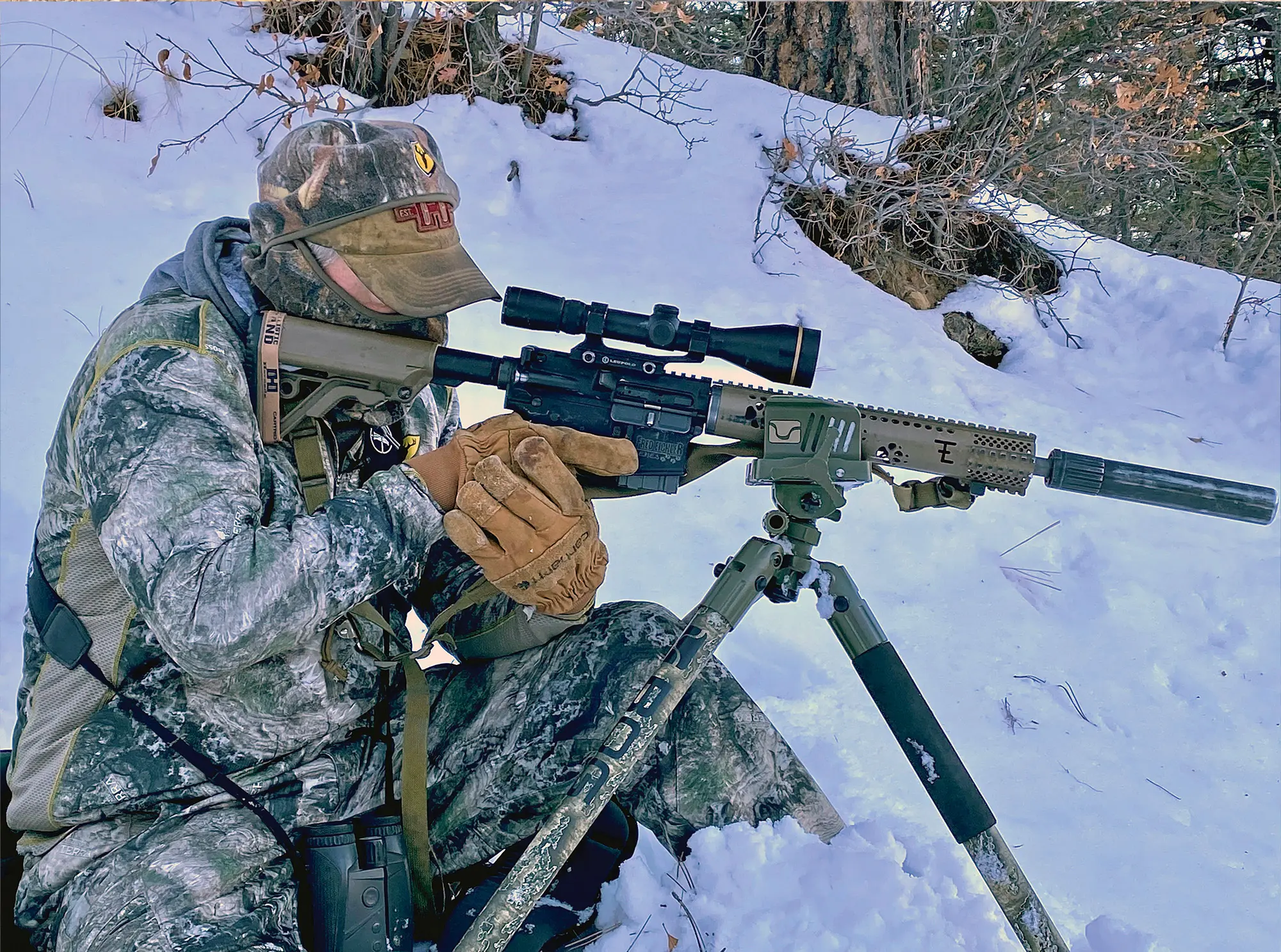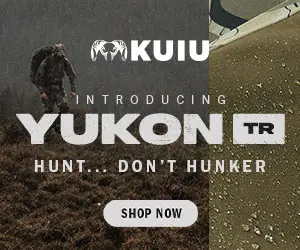
NOTICE: Certain links on this post may earn a commission for Western Hunter Magazine from Amazon or our other affiliate partners when you make a purchase. Thank you for your support.
Winter-Time Predators: Gearing up for cold weather hunts
I hunt coyotes year-round. One reason for this is that I think managing predators is extremely important, and the other is because it’s a blast. I manage coyotes to help preserve our numbers of deer, antelope, elk, etc, but also to protect our calves along with our chickens, goats, and dogs. Over years of dealing with predation issues and working on controlling coyotes all year, I have found that I always have the most success in the winter. In the winter, it’s easy to be more successful with multiple methods of predator hunting. The reason is simple. In the winter, when temperatures drop, predators need to increase their caloric intake.
I have baited coyotes during the summer with dead cows or other artificial bait like Conquest rabbit or coyote scent, but there is no comparison to the numbers of coyotes that come in to a scent or a carcass in the winter. It’s just the simple fact that during the spring or summer they don’t need the calories as badly as they do in the winter. They will still come to calls in the hottest months of the year, but not as readily as they will when it’s cooler.
Besides needing less food in the hotter months, predators often don’t respond as well to calls or bait in the spring and summer because there are all kinds of baby birds, squirrels, fawns, rodents, insects, and other food sources readily available.
That’s why for serious predator management, or just to put up a lot of furs, wintertime is my favorite time to hunt. All animals, including predators, are thinking with their bellies when forage and food get tough to find. Truth be told, I am not much different.
Even though, in my opinion, winter predator hunting is the best, it can come with its own challenges depending on where you’re hunting.
I have been fortunate to harvest coyotes from Florida to Canada and most places in between. The gear I needed often varied based on the weather. Extreme temperatures can keep even the most hardcore hunters from going if they are not prepared. For example, when hunting coyotes in Florida a few winters ago, I didn’t really have to do anything special. The cold temperatures everyone was complaining about were only in the mid-30s, so I didn’t need any special gear at all.
In Colorado where I live, temperatures can drop below zero as they do in many other states, and hunting in the teens is commonplace. Opportunities for prime furs, as well as more action in the winter, make it a great time to go. If you want a few tips that will help you be more successful and keep you in the field without problems, read on.

Calls
If you use an electronic call, no matter which one you choose to use, it will need batteries. Cold weather kills batteries, and having a call die while on-stand ranks up there as one of the things that drive me crazy. I have switched my remotes and calls to the Energizer lithium batteries. They are more expensive, but they are worth it and will keep you running longer.
Boots
Don’t skimp. Cheap boots won’t keep you warm, and they won’t keep you dry. I like 600-800 grams of Thinsulate, and I like Kenetrek, Meindl, or Thorogood for great boots that keep me warm. Once my feet get cold, I move around too much or I have to head in. Less time in the field equals fewer predators.
Chairs
I just plop down on the ground most of the time. In frigid conditions or when there is snow on the ground, I can increase my time in the field by sitting on something as simple as a waterproof pad or as comfortable as a Millennium chair with a backrest. By staying off the snow and or cold ground, I stay warmer and more comfortable longer. That means I stay in the field longer and make more sets. The inconvenience of carrying a chair more than pays off for me because I can stay longer on set and make more sets when I am not miserable, wet, or cold.
Clothes
20 years ago, when it was cold, I could just throw on a few flannel shirts and my old Carhartt jacket and be just fine. I was younger and tougher then and could stand a little more cold. Now, with all the new materials and technology go into clothing, there is no reason to try and tough it out. I now layer with Blocker Outdoors clothing that’s made of fancy stuff like Wooltex that keeps me comfortable and warm. So, do some research and get some good clothing and gloves. If you can’t stay out there to hunt, you will not be shooting many predators.

Guns
Any gun can be a coyote rifle, from a .22 caliber air rifle to a .50 caliber. Sometimes, however, it is nice to have one that has some features you want that will also be advantageous in the field. I try not to be too biased because I did help design it, but I hunt the majority of my coyotes with a Rock River Arms AR in .223. It has a lot of predator-specific features that are handy in the winter. An oversized trigger guard is one feature I utilize all the time. The large trigger guard allows me to comfortably get a gloved finger on the trigger. When it’s super cold out, it’s nice to be able to keep your gloves on to shoot.
Another feature on my rifle that is handy for wintertime predators is that besides the top rail, it has Picatinny rails located at the 3, 6, and 9 positions on the handguard. This is handy for mounting lights, thermal scopes, or night vision scopes. Another thing I look for, besides accuracy and durability, is a reasonably priced firearm because I beat the heck out of mine. Rough conditions require tough equipment. That is why I like the Rock River for an AR. When it comes to bolt guns, I really like my Mossberg Patriot in .223 or a Remington bolt in the same caliber.

Tripod
I always use a tripod or bipod because I think it’s almost as important as my gun. Having a stable platform to shoot from is important any time of year, but it’s more difficult to attain when you’re cold. Resting a gun on my lap or trying to hold the cold metal or wood in my hands while waiting for a predator to show up can be torture. Plus, I am a terrible off-hand shot, so I prefer a stable platform. The BOG Death Grip is my favorite because of its ability to hold the gun in a shooting position by itself, while still allowing me to pivot up and down or side to side.
Whether you’re hunting predators in Florida or Alaska, if you aren’t already hunting them in the winter, give it a try. Odds are that no matter what your favorite predator method is, it will be even better when it’s cold.

